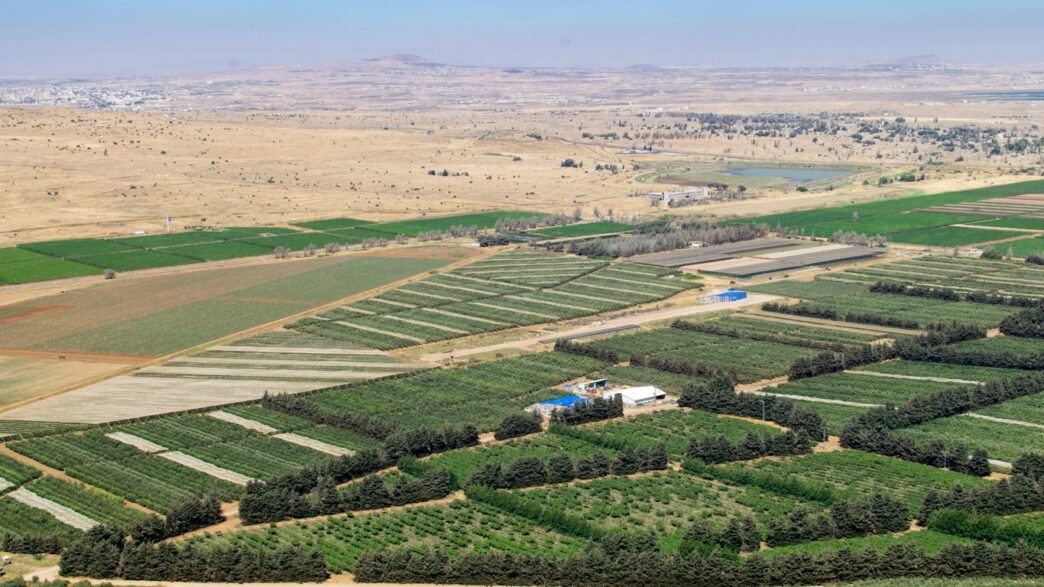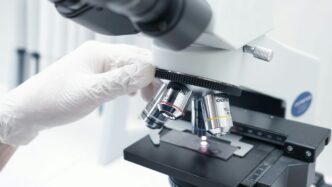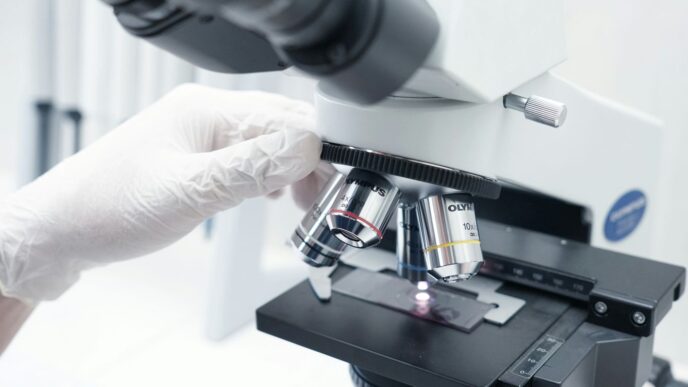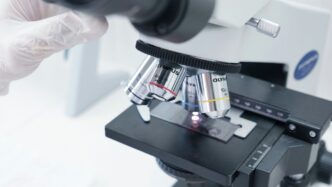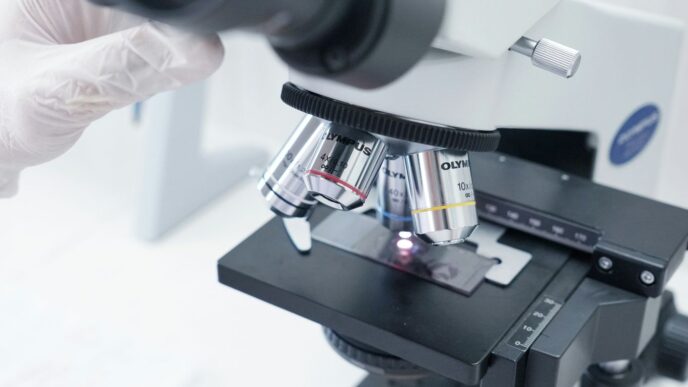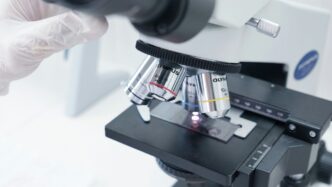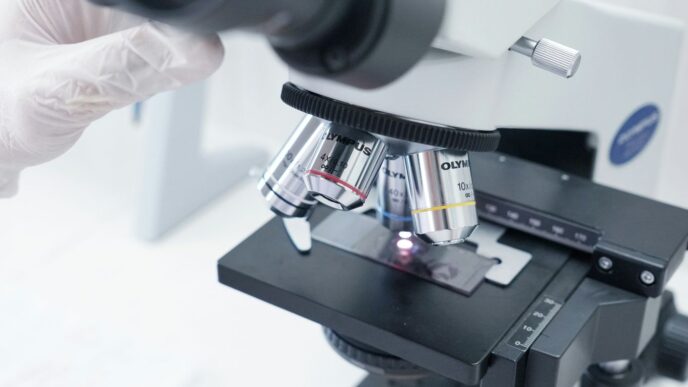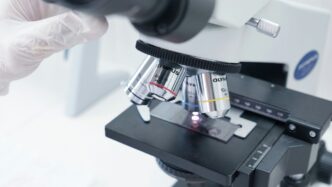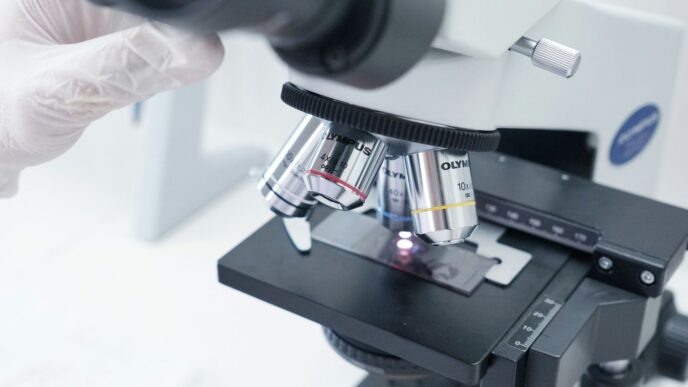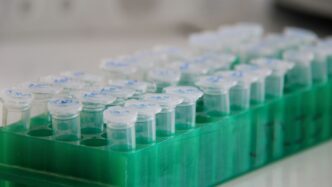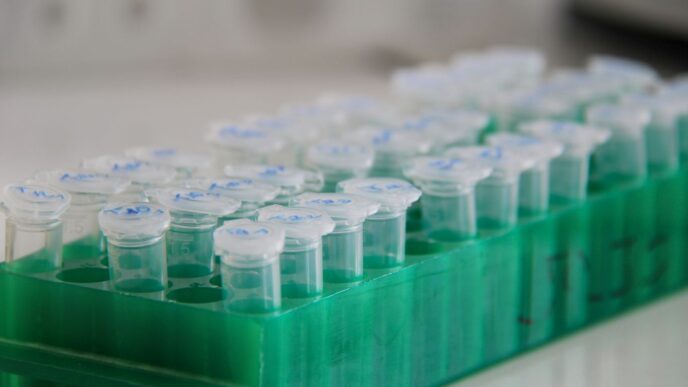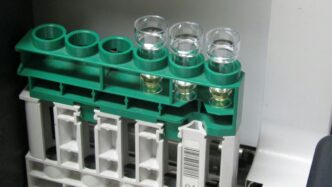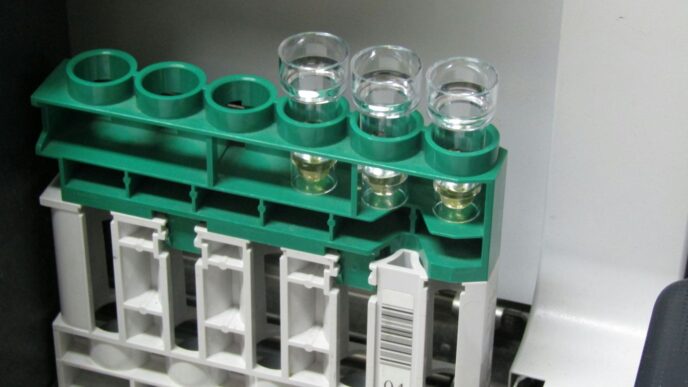Farming in dry, sandy places used to seem impossible. But Israel has figured out some pretty neat tricks to make deserts bloom. It’s amazing how they’ve taken land that was just sand and turned it into places where food actually grows. This whole thing is a big deal for people who need food, especially with the climate changing. We’re going to look at how they’re doing it, from watering plants in a super smart way to picking the right crops and using cool new tech.
Key Takeaways
- Israel has become a world leader in arid land farming by developing smart ways to manage water, like advanced drip irrigation and desalination.
- Technology plays a huge role, with AI, sensors, and satellite data helping farmers make better decisions about crops and resources.
- Improving desert soil is key, using methods like adding organic matter and managing salt levels to make the land more fertile.
- Developing special types of crops that can handle dry conditions and salty soil is another important strategy for israel desert agriculture.
- Several Israeli companies are driving these innovations, offering solutions that are used around the globe to make farming possible in tough environments.
Pioneering Water Management in Arid Lands
Water. It’s the big one, right? Especially when you’re trying to grow anything in a place that’s basically a giant sandbox. For years, farming in deserts seemed like a pipe dream, mostly because, well, there’s no water. But things are changing, and a lot of that change is happening right here in Israel. We’re not just talking about digging wells anymore; we’re talking about smart, efficient ways to get every single drop of water to do its job.
Revolutionary Drip Irrigation Systems
Forget the old sprinklers that just spray water everywhere, most of which evaporates before it even hits the ground. Drip irrigation is a game-changer. It’s like giving each plant its own personal water bottle, delivering water right to the roots. This targeted approach means way less water is wasted, and plants get exactly what they need, when they need it. We’re seeing water savings of up to 70% compared to older methods. It’s not just about saving water, though; it also helps prevent salt from building up in the soil, which is another huge problem in dry areas.
Advanced Desalination and Water Recycling
When you don’t have enough freshwater, you get creative. Desalination plants, often powered by the abundant desert sun, are turning salty seawater into usable water for farms. It’s a big step, especially for coastal desert regions. Then there’s water recycling. Treated wastewater, which used to be just dumped, is now being cleaned up and used for irrigation. It’s a smart way to add to the water supply without dipping into precious freshwater sources. These methods are making it possible to farm in places that were previously considered impossible.
IoT-Enabled Precision Water Application
This is where technology really steps in. Think of tiny sensors buried in the soil, connected to the internet. These sensors, along with data from satellites and drones, paint a super detailed picture of what’s happening with moisture levels, soil conditions, and plant needs. This information feeds into smart systems that decide exactly when and how much water each part of the field needs. It’s all about precision – no more guessing. This data-driven approach means we’re using water more effectively than ever before, making sure not a single drop is wasted. It’s like having a personal irrigation advisor for every square meter of your farm.
Harnessing Technology for Desert Farming
It’s pretty wild how much technology is changing the game for farming in places that used to be considered too dry to grow much of anything. We’re talking about deserts, folks! It’s not just about slapping down some pipes and hoping for the best anymore. We’re seeing some seriously smart tools come into play, making these arid lands actually productive. The integration of digital agriculture, remote sensing systems, and AI-driven tools is at the heart of this desert farming revolution. It’s like giving the land a high-tech upgrade, and it’s working.
AI and Machine Learning for Crop Optimization
So, how does this AI stuff actually help? Well, imagine having a super-smart assistant that watches over your crops 24/7. AI and machine learning systems are doing just that. They look at all sorts of data – like weather patterns, soil conditions, and how the plants are growing – and then they figure out the best way to plant, when to water, and how much fertilizer to use. They can even predict when pests might show up, so farmers can get ahead of the problem before it gets bad. It’s all about making sure every plant gets exactly what it needs, when it needs it, which is a big deal when water is so scarce. This means less waste and healthier crops.
Satellite-Based Remote Sensing
Now, how do you keep an eye on a huge farm in the middle of nowhere? Satellites are the answer. These things are like giant eyes in the sky, constantly monitoring everything. They can tell us about the health of the crops, how much moisture is in the soil, and if certain areas need more water. They use special indices, like NDVI and NDWI, to get these readings. This is super useful for large areas that are hard to get to on the ground. Plus, it helps track the environmental impact of farming, like carbon footprints, which is becoming more important.
Controlled Environment Agriculture
Sometimes, you just need to create your own perfect little world for growing. That’s where controlled environment agriculture, or CEA, comes in. Think of high-tech greenhouses or even indoor vertical farms. These places let farmers grow crops year-round, no matter what the weather is doing outside. They use systems like hydroponics (growing in water) or aquaponics (using fish waste for nutrients) which are really efficient with water and nutrients. It’s like creating a mini-oasis of productivity, shielded from the harsh desert conditions. It really maximizes what you can grow in a small space.
Transforming Arid Soil Conditions
Desert soils present a unique set of challenges, often characterized by low organic matter, poor water retention, and sometimes high salt content. It’s not exactly prime real estate for farming, right? But Israeli innovators have been working hard to change that, figuring out ways to make these tough soils actually work for crops. It’s all about giving the soil a helping hand and making it more hospitable.
Organic Matter and Biochar Enrichment
One of the biggest issues with desert soils is their lack of life and structure. Adding organic matter, like compost or well-rotted manure, is a classic way to start. It helps the soil hold onto water better and provides food for beneficial microbes. But what’s really making waves is biochar. Think of it as charcoal, but made specifically for soil. It’s incredibly porous, which means it can soak up and hold water like a sponge, releasing it slowly to plant roots. Plus, it provides a stable home for those helpful soil microbes. We’re seeing a real shift towards using these amendments to build healthier, more fertile soil from the ground up.
Conservation Tillage and Mulching Techniques
When you’re dealing with dry, often sandy soils, you have to be careful about disturbing them too much. Tilling, or plowing, can break up the soil structure, leading to erosion from wind and the rare but intense rain. That’s why conservation tillage, which means disturbing the soil as little as possible, is becoming more popular. It helps keep the soil in place and preserves what little moisture is there. Then there’s mulching. This involves covering the soil surface with a layer of material – could be crop residues, wood chips, or even special biodegradable films. This cover acts like a blanket, shielding the soil from the harsh sun, which drastically cuts down on water evaporation. It also helps keep soil temperatures more stable, which is a big win in the desert.
Effective Salt Management Strategies
Salinity is a major headache in many arid regions. As water evaporates from the soil surface, it leaves behind salts. If irrigation water itself is also salty, the problem gets worse. Too much salt can actually pull water out of plant roots, essentially dehydrating them, and it can be toxic. So, managing salt is key. This involves a few things. Sometimes, it means using techniques to ‘flush’ the salts out of the root zone with extra water, though that’s tricky when water is scarce. More often, it’s about preventing salt buildup in the first place through smart irrigation and choosing crops that can handle a bit of salt. We’re also seeing advancements in treating saline soils to make them less harmful, which opens up more land for farming.
Cultivating Resilience with Crop Innovation
Farming in the desert isn’t just about managing water and soil; it’s also about picking the right plants. Israel’s agricultural scientists have been working hard to develop crops that can handle the tough conditions, like intense heat, little rain, and salty soil. It’s a bit like choosing the right gear for a challenging hike – you need things that are built to last and perform when things get tough.
Developing Drought-Resistant Varieties
When you think about farming, you probably picture lush fields. But in arid regions, that’s not the reality. So, the focus shifts to crops that don’t need a lot of water to begin with. Think about things like:
- Millet and Sorghum: These grains are tough and can grow with very little water, making them a staple in many dry areas.
- Certain Legumes: Beans and lentils, especially specific varieties, are known for their ability to survive dry spells.
- Hardy Grains: Beyond the usual wheat and corn, researchers are looking at older or less common grains that have a natural ability to withstand drought.
Selecting Salt-Tolerant Crops
Salinity is a big problem in desert soils, often made worse by irrigation. So, finding or creating crops that can handle salt is a game-changer. Some plants naturally do well in salty conditions, known as halophytes. Researchers are looking at:
- Barley: Certain types of barley can tolerate higher salt levels than wheat.
- Quinoa: This ancient grain is surprisingly resilient and can adapt to various soil conditions, including some salinity.
- Salicornia: Also known as sea asparagus, this plant actually thrives in salty environments and is being explored as a food source and for biofuel.
Modern Breeding and Gene Editing for Arid Environments
Gone are the days of just waiting for nature to do its thing. Today, scientists are using advanced tools to speed up the process of creating better crops. By 2025, techniques like CRISPR gene editing and marker-assisted selection are making it possible to:
- Pinpoint Desired Traits: Identify the specific genes responsible for drought or salt tolerance.
- Accelerate Development: Introduce these traits into crops much faster than traditional breeding methods.
- Tailor Crops: Create varieties that are not only tough but also productive and nutritious for desert farming.
This combination of smart breeding and careful selection means that even the most challenging desert landscapes can become productive agricultural areas, contributing to food security and economic growth.
Notable Israeli AgTech Companies

Israel’s journey from a land of scarcity to agricultural abundance is largely thanks to its innovative companies. These businesses aren’t just making farms more productive; they’re showing the world how to grow food in tough places. It’s pretty amazing what they’ve come up with.
Netafim’s Drip Irrigation Leadership
Netafim is practically synonymous with drip irrigation. They really got this whole idea of giving plants water right at the root off the ground. Their systems are designed to use water super efficiently, which is a big deal when you’re farming in a dry place. It means less water wasted and healthier crops. They’ve spread this technology all over the globe, helping farmers in over 110 countries.
Taranis’s AI Field Insights
Imagine having a hawk’s eye view of your entire farm, all the time. That’s kind of what Taranis does. They use high-resolution images, often from drones or planes, and then apply artificial intelligence to analyze them. This lets farmers spot problems like pests or diseases early on, sometimes even before they’re visible to the naked eye. It’s all about giving farmers the exact information they need to make smart decisions about their fields, saving crops and resources.
CropX’s Data-Driven Optimization
CropX focuses on the soil itself. They’ve developed smart sensors that go right into the ground, collecting data on moisture, nutrients, and more. This information is then sent to a platform that analyzes it. The system helps farmers figure out exactly how much water and fertilizer to use, and when. This kind of precision means you’re not over- or under-watering, and you’re not wasting expensive nutrients. It leads to better yields and a more sustainable approach.
SupPlant’s Adaptive Irrigation
SupPlant takes a plant-centric approach to irrigation. Their systems use sensors to monitor not just the soil, but also the plant’s actual needs. It’s like the irrigation system can ‘talk’ to the plants and figure out what they require at any given moment. This adaptive technology means water is delivered precisely when and where it’s needed, responding to real-time conditions. It’s a sophisticated way to make sure crops get the perfect amount of water, no more, no less.
Case Studies in Desert Agriculture Transformation
It’s pretty amazing what people are doing with farms in places that used to be just sand and rocks. Israel, in particular, has become a real hotspot for figuring out how to grow food in the desert. They’ve taken these tough conditions and turned them into something productive. It’s not just about survival anymore; it’s about thriving.
The Arava Desert’s Agricultural Renaissance
The Arava Desert, a long, dry stretch between Israel and Jordan, used to be pretty much empty. Now, it’s full of farms producing all sorts of things. The big change came with smart water use. Think about it: you’ve got almost no rain, and the sun is intense. So, they had to get creative.
- Drip irrigation is a huge part of this. Instead of flooding fields, tiny amounts of water go right to the plant’s roots. This saves a ton of water, which is obviously super important here.
- They also figured out how to grow crops that can handle the heat and the slightly salty soil. Things like peppers, tomatoes, and melons are now grown here in large amounts.
- Using greenhouses helps a lot too. They control the temperature and humidity, protecting the plants from the worst of the desert weather and reducing water loss.
It’s a real testament to human ingenuity. What was once considered unusable land is now a source of fresh produce, not just for Israel but for export too. It shows that with the right approach, even the harshest environments can become fertile.
The Hula Valley’s Agricultural Hub
While not strictly a desert, the Hula Valley in northern Israel faced its own set of environmental challenges, particularly with water management and soil conditions after its historical draining. The transformation here is a bit different but equally impressive, focusing on intensive, high-tech agriculture.
- Advanced water management techniques are key, even though it’s a wetter region than the Arava. They use sensors and data to make sure water is used efficiently, preventing waste and runoff.
- The area has become a center for controlled environment agriculture (CEA). This includes high-tech greenhouses and even some vertical farming operations. These systems allow for precise control over growing conditions, leading to higher yields and reduced resource use.
- They’ve also focused on soil health and nutrient management. This involves using organic fertilizers and advanced soil monitoring to keep the land productive year after year.
The Hula Valley shows how technology can be applied to optimize farming even in areas that aren’t extreme deserts, creating a productive agricultural hub that balances output with environmental care. It’s a model for intensive farming that minimizes its footprint.
A Greener Future in the Sands
So, what’s the takeaway from all this? It’s pretty clear that Israel’s approach to farming in the desert isn’t just some niche experiment anymore. They’ve really figured out how to make arid land work, turning what used to be empty sand into places that grow food. It’s not just about survival; it’s about thriving. By using smart tech, like those clever drip irrigation systems and AI that watches over the crops, they’re proving that you don’t need tons of water or perfect soil to grow good food. This whole effort shows the rest of the world that even in tough spots, we can find ways to farm better and more sustainably. It’s a hopeful sign, really, that we can adapt and keep feeding everyone, even as the climate changes.
Frequently Asked Questions
How does Israel manage to grow crops in the desert?
Israel uses smart technology and clever water-saving methods. They developed special drip irrigation that gives water right to the plant’s roots, like a slow, steady drink. They also use advanced machines to clean salty water and reuse water that’s already been used, making sure every drop counts.
What is drip irrigation and why is it important for desert farming?
Drip irrigation is a way to water plants very precisely. Instead of spraying water everywhere, tiny tubes deliver water straight to the base of each plant. This is super important in deserts because it stops most of the water from drying up in the hot sun and wind, so more water actually gets to the plants.
Can technology really help grow food in dry places?
Yes, absolutely! Things like sensors that tell farmers exactly when and how much to water, or computers that help decide the best time to plant and fertilize, make a huge difference. Satellites and drones also help keep an eye on the crops from above to catch problems early.
What kind of crops can grow in desert conditions?
Farmers are now growing a wider variety of crops, even in dry areas. They are developing special plant types that don’t need much water or can handle salty soil. Hardy grains, certain vegetables, and even fruits are now being grown successfully where it was once thought impossible.
Are there companies in Israel that help with desert farming?
Yes, Israel has many companies that are leaders in farming technology. Companies like Netafim are famous for their drip irrigation, while others use AI and sensors to help farmers manage their fields better and use water more wisely.
Does growing food in the desert help the environment?
When done right, it can! By using water very efficiently and finding ways to improve the soil, desert farming can prevent land from becoming even drier. It also helps make sure there’s enough food for everyone without using up precious resources in other places.


